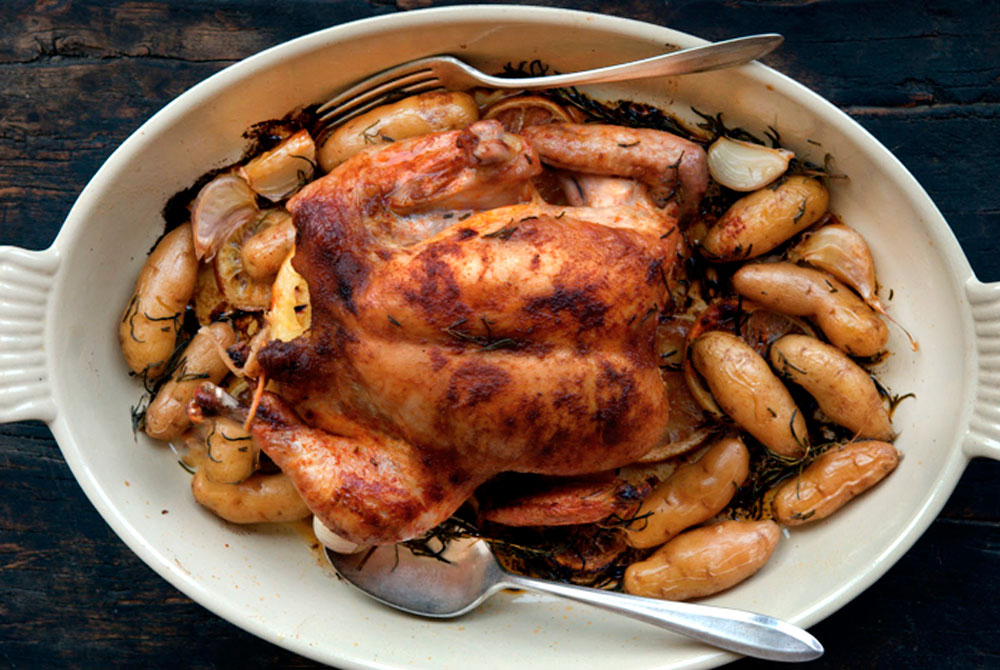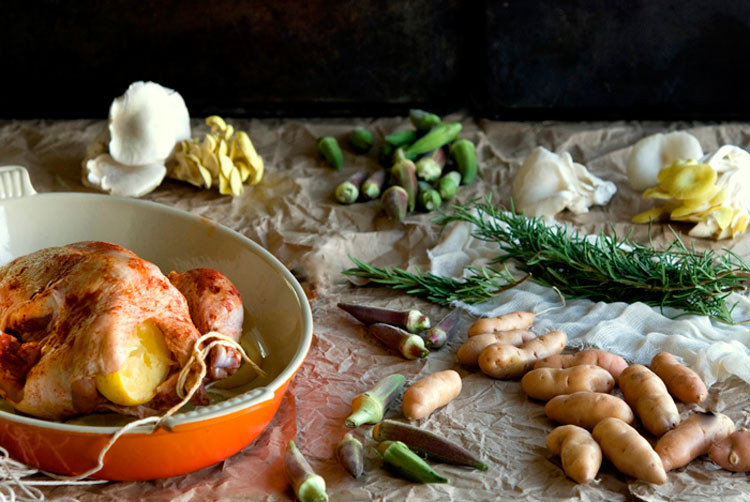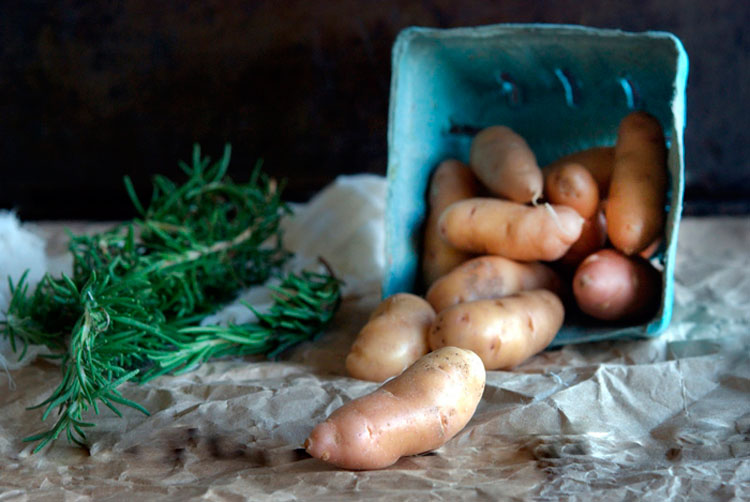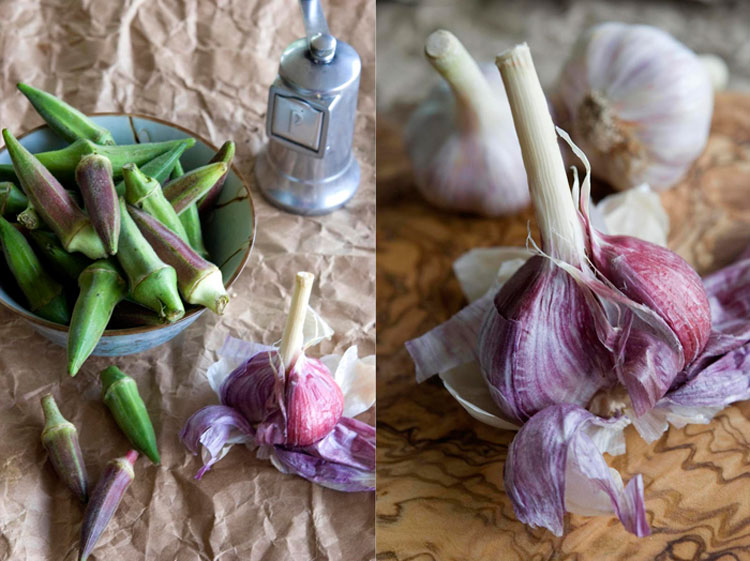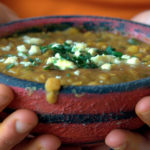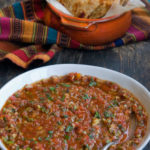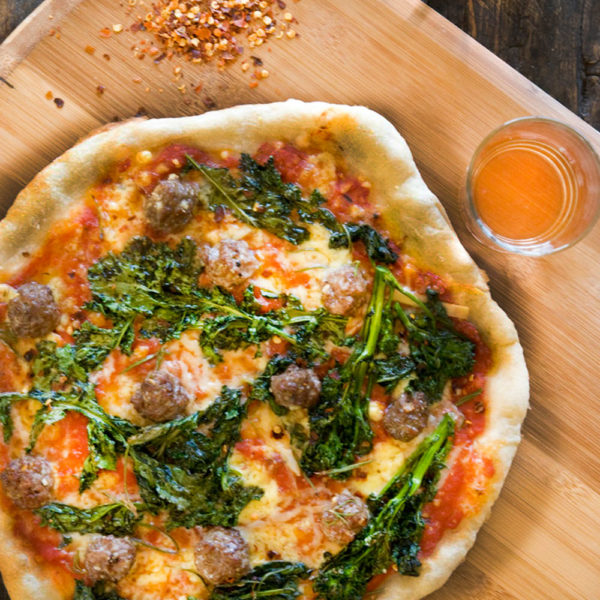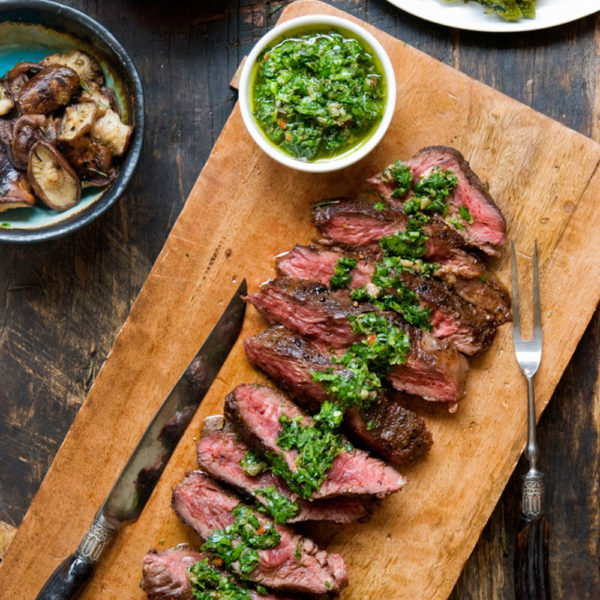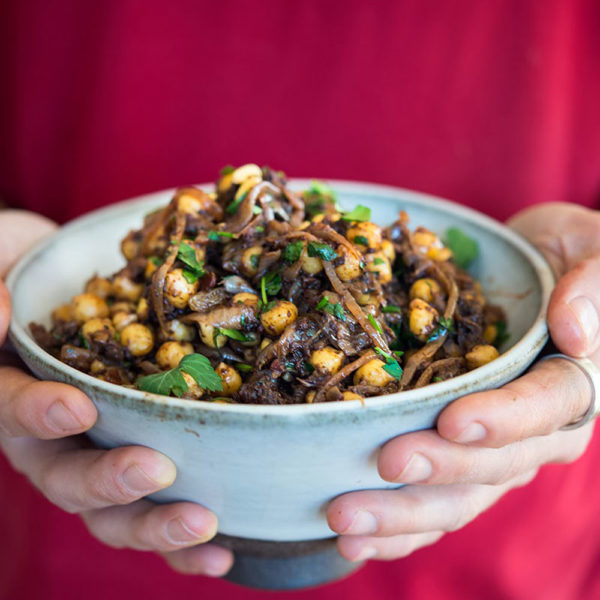Simple, simple, simple but oh so tasty, tasty, tasty. All I did was pre-salt/preseason the chicken 24 to 36 hours in advance (more on this in a bit), placed the chicken on a bed of thinly sliced lemons, along with potatoes [tossed in extra virgin olive oil, sea salt, black pepper, and plenty of fresh rosemary], and a substantial number of whole garlic cloves. Then, popped it in the oven to roast (45 minutes for this 3-pounder). That’s it.
The result…one super moist and juicy bird — no dry, chalky meat here. The lemon slices get nice and crispy and caramelized when roasted in the oven. And, when their juices mingle with the rosemary and juices of the chicken and smoked paprika…you get an irresistible pan sauce (no extra work required). And the smell…intoxicating.
That being said, starting with a good quality chicken makes all the difference. Look for one at your local farmers’ market, preferably from a farmer you know and trust. Got mine here, but there are a plethora of farmers doing great stuff across the country. Make friends with at least one
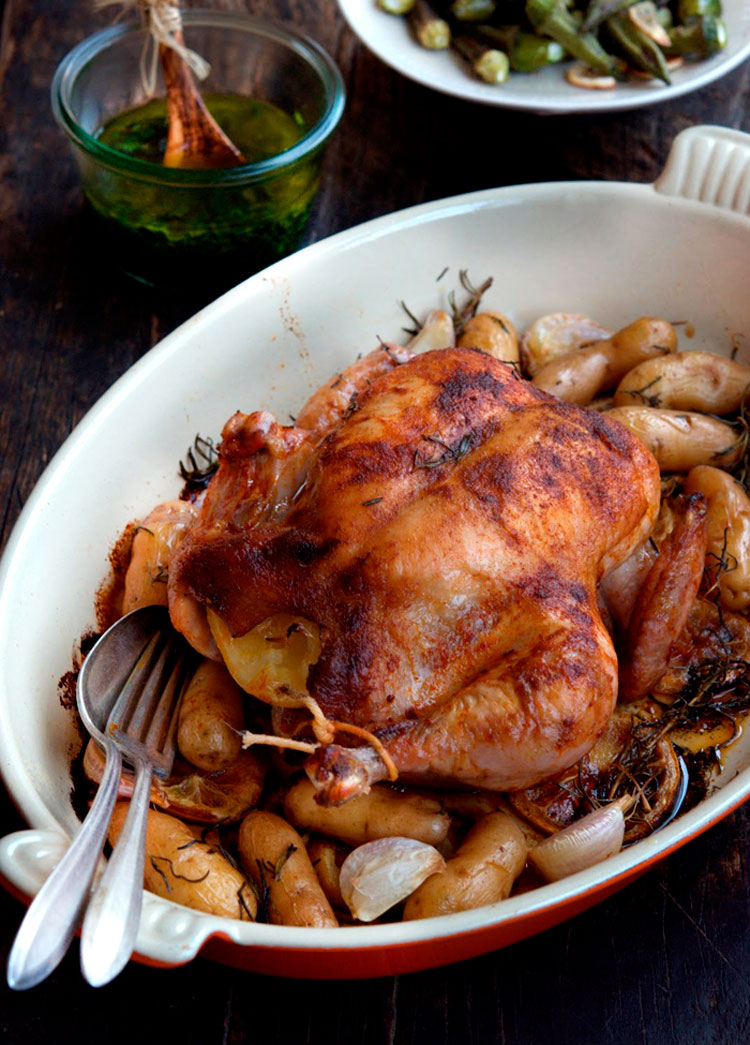
Why and how to pre-salt [from Molly Stevens, author of All About Roasting]?
How much to presalt (measurements based on using kosher salt) as little or a much as 8 to 48 hours in advance (but preferably 24 to 36 hours):
3-pound chicken: 1 1/2 to 2 teaspoons
3 1/2-pound chicken: 1 3/4 to 2 1/2 teaspoons
4-pound chicken: 2 teaspoons to 2 3/4 teaspoons
4 1/2-pound chicken: 2 1/4 to 3 1/2 teaspoons
*amount of salt will vary on the length of time, size of the bird, and personal preference
I also roasted some okra in the oven. Simply tossed in olive oil, garlic powder, salt and pepper, and then roasted for 20 minutes at 400 degrees (as recommended by one of the farmers at my local farmers’ market). Go for the smaller okra if you can find some; I find them to be much more tender.
Whole Roast Chicken
Inspired by Molly Steven’s All About Roasting
3 to 4 1/2-pound whole chicken
Kosher salt
Herbs and/or spices of your choice (used smoked hot paprika)
Extra virgin olive oil
1 1/2 to 2 whole lemons, thinly sliced
12 to 14 small whole potatoes
Small bunch fresh rosemary
1 head of garlic, separated into individual cloves, skins on (more if you like)
Sea salt and fresh ground black pepper
Remove the giblets from the cavity (if there are any) and set aside for later use. Pat the chicken dry inside and out with paper towels.
Presalt the chicken (based on the amounts above) by sprinkling the salt all over the chicken’s surface, including the back, thighs, and drumsticks, and a little in the cavity. Add other seasonings/herbs of your choice at this point as well. Arrange the salted chicken on a wire rack and set in a baking dish to catch any drippings. Refrigerate, ideally uncovered, or loosely with plastic wrap, for as little as 8 hours and up to 48 hours.
Let the chicken sit at room temperature for an hour before roasting. If you like, you can squeeze the juice of a lemon or two and stuff the cavity with the rinds [reserve the juice for other uses]. You can also truss the bird if you desire (but it’s not necessary), by tying the two drumsticks together with kitchen string.
In a large bowl, toss the potatoes with 1 to 1 1/2 tablespoons olive oil, salt and pepper, and 1 tablespoon chopped rosemary.
Position a rack in the center of the oven. Preheat the oven to 400 degrees.
Arrange the lemon slices in a single layer in a large ovenproof skillet or gratin pan. Place the chicken on top of the lemon slices and tuck the wing tips back, so they are secure under the neck bone. Rub 2 teaspoons of olive olive over the breasts and legs. Scatter the potatoes and garlic cloves around the pan. Place a few whole sprigs of rosemary in the pan as well. Roast the chicken with the legs facing toward the back of the oven. Roast until the juices run clear with only a trace of pink (when you prick the thigh) and an instant thermometer inserted in the thickest part of the thigh (without hitting the bone) registers 170 degrees. Let rest 20 minutes before serving.
Note: Stevens suggests 1 to 1 1/4 hours for a 3 1/2 to 4-pound chicken. Took 45 minutes for my chicken, which was just under 3 pounds.
